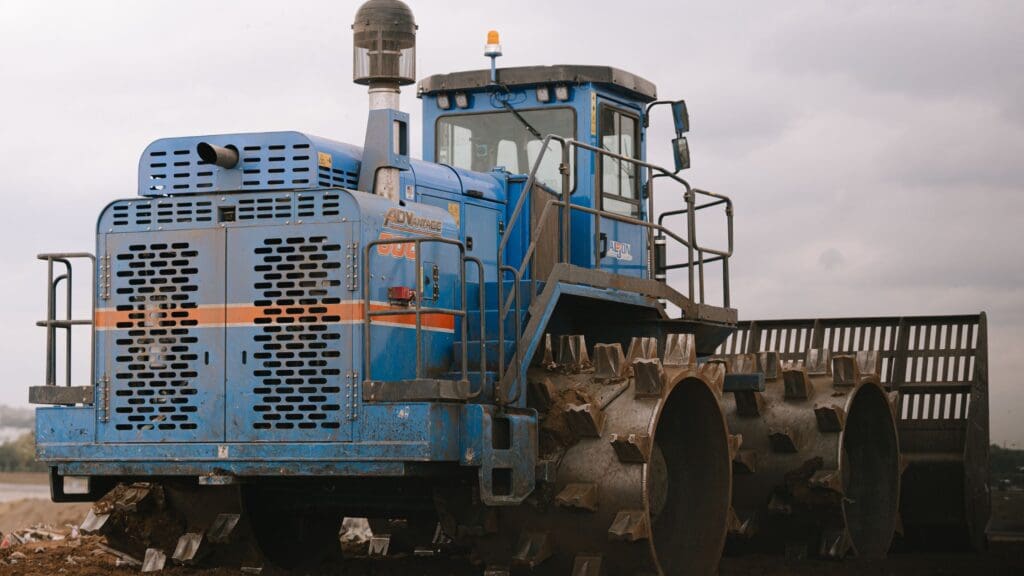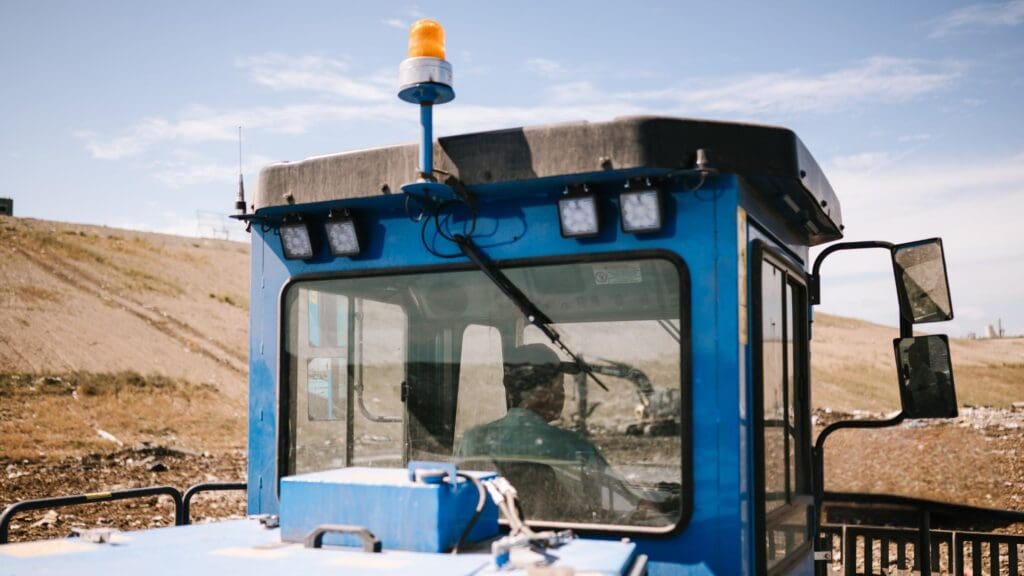Landfill compactors today, much like all types of heavy equipment, are designed with two different powertrain designs: hydrostatic drive and powershift transmissions. In the world of heavy equipment, both have value in a variety of applications, but here we want to talk about the landfill application and the value of a hydrostatic drive powertrain on landfill compactors.
Hydrostatic drive powertrain systems improve machine performance values in landfill compactors, such as better compactability, gradeability, maintainability, and overall performance. All three Aljon landfill models are designed with a highly efficient hydrostatic drive powertrain, resulting in full-time all-wheel drive as each wheel is powered by a single hydraulic pump and motor at each planetary.
Compactability / Gradeability
With each wheel being powered by a dedicated hydraulic pump and motor, coupled with an oscillating frame, all wheels having contact with the material at all times, (all-wheel drive capability and landfill compactor oscillation). Aljon produces 100% gradeability, which results in better compaction ratios when compacting on slopes, ultimately improving landfill airspace.
Maintainability
A hydrostatic powertrain system has fewer major components, which means fewer moving parts that can potentially fail. This primarily consists of a gearbox on the back of the engine, which drives four hydraulic pumps, providing fluid power to each drive motor at the planetaries. Routine maintenance is much simpler as well, having fewer components that need to be serviced when performing scheduled preventative maintenance.
Overall performance
Aljon’s hydrostatic powertrain performs best when operated at high RPM, using only the FNR (Forward & Reverse) selector to change directions and the speed selector to change the travel speed. This reduces the need for the operator to accelerate or decelerate during operation and focus primarily on best practices, compaction methods, the operator’s surroundings, and the safety of other machinery/personnel operating on the working face.



